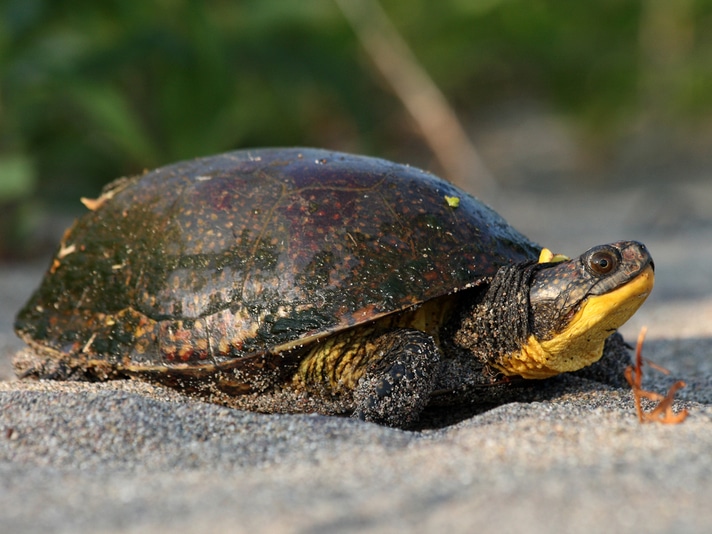The trust held a fund drive to purchase the site, called the McGowan Lake Turtle Sanctuary
A forested peninsula and 15 islands in southwest Nova Scotia has been designated as Nature Trust Conservation Lands for the Blanding's turtle (Emydoidea blandingii) by the Nova Scotia Nature Trust, which launched a funding drive to help save the area for the endangered species.
The trust was able to secure $224,000 to purchase the site, called the McGowan Lake Turtle Sanctuary, thanks to a funding drive launched in November 2012. Among the donors was the Chronicle Herald, which gave $19,500 to help save the 66 acre property, and TD Bank, which donated $5,000. Other corporations that contributed include Scotiabank, Ascenta, AVEDA, and the Imperial Oil Foundation. More than 300 individuals donated, including 150 people who supported the effort by symbolically "adopting" a turtle as a holiday gift.
The land includes 3.7 miles of undeveloped lakeshore that the trust said is ideal nesting habitat for the turtles. Emydoidea blandingii is listed as an endangered species in Canada as well as in Nova Scotia. The trust estimates that 350 adult turtles can be found in Nova Scotia. In the United States, the Blanding's turtle is protected in every state in which the species occurs and is listed as endangered under the International Union for Conservation of Nature.
The Blanding's turtle grows to about 9 inches in length with some males growing to 10 inches. They reach sexual maturity at around 20 years old in the wild, though the Nature Trust estimates that less than one percent of hatchlings survive. The turtle feeds on crustaceans and other invertebrates, as well as fish, plants, dead animal matter and vegetable debris. They can live for up to 70 years.


